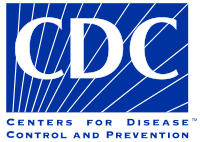
Photo from wikipedia
Mosquitoborne disease outbreaks occur every year in the United States from one or more of the arboviral diseases dengue, West Nile, LaCrosse, Eastern equine encephalitis, and Zika (1). Public opinion… Click to show full abstract
Mosquitoborne disease outbreaks occur every year in the United States from one or more of the arboviral diseases dengue, West Nile, LaCrosse, Eastern equine encephalitis, and Zika (1). Public opinion communicated through traditional and social media and the Internet, competing public health and resource priorities, and local conditions can impede the ability of vector control organizations to prevent and respond to outbreaks of mosquitoborne disease. The Environmental Protection Agency (EPA) and CDC performed a coordinated review of the concerns and challenges associated with continuation of mosquito surveillance and control during public health emergencies and disasters. This report highlights the first joint recommendation from EPA and CDC. Mosquito surveillance and control should be maintained by state and local mosquito control organizations to the extent that local conditions and resources will allow during public health emergencies and natural disasters. Integrated pest management (IPM) is the best approach for mosquito control (2). IPM uses a combination of methods, including both physical and chemical means of control (3). For chemical means of control, CDC and EPA recommend the use of larvicides and adulticides following the EPA label. It is imperative that public health recommendations be followed to ensure the safety of the pesticide applicator and the public.
Journal Title: MMWR. Morbidity and mortality weekly report
Year Published: 2020
Link to full text (if available)
Share on Social Media: Sign Up to like & get
recommendations!